While processing the photos for yesterday’s post, I kept looking for shots of an Avocet chick swimming which I remembered quite clearly taking. When they were nowhere to be found, I assumed I must’ve accidentally deleted them. However, after I posted the entry, I found them in a completely different folder in Lightroom.
That is what happens when you shoot over 2000 shots in three days on two different cameras. When I got home, I transferred most of the shots from my portable computer, but I had the last days shot on a memory card. Somehow, the shots on the memory card ended up in a completely different folder with no mention of Utah in the name.
Like the Wizard in Oz, I try to keep up an image of perfection on my website. Obviously, I screwed up this time. I could’ve just moved on and posted adorable shots of Western Grebe chicks and left that impression of perfection in tact, but this sequence might be my favorite shots of Avocet chicks and if I didn’t post them now I never would.
Without further ado, here are shots of an Avocet chick leaving the nest,
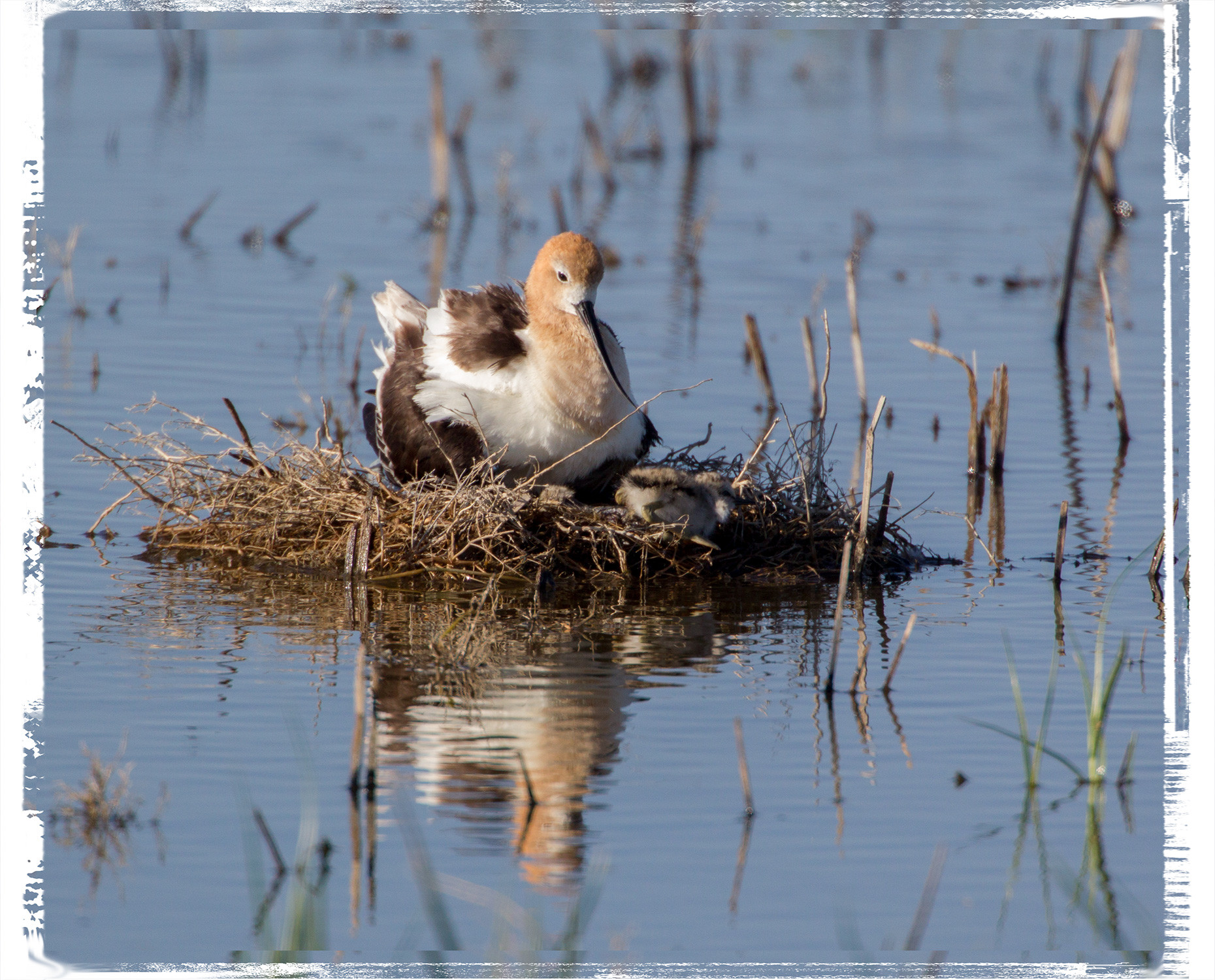
trying to crawl back into the nest just as the parent decides to leave the nest
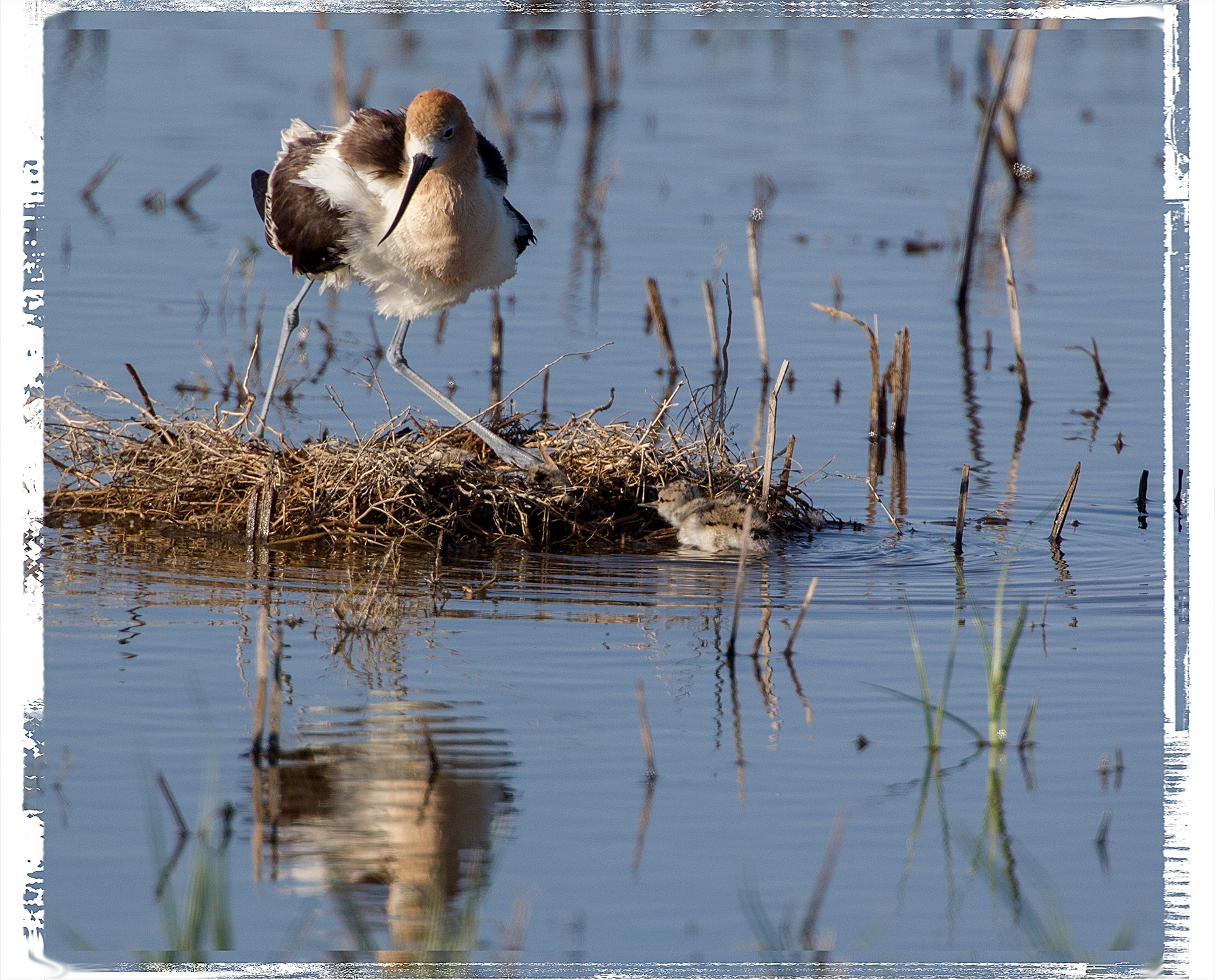
managing a long climb back into the nest,
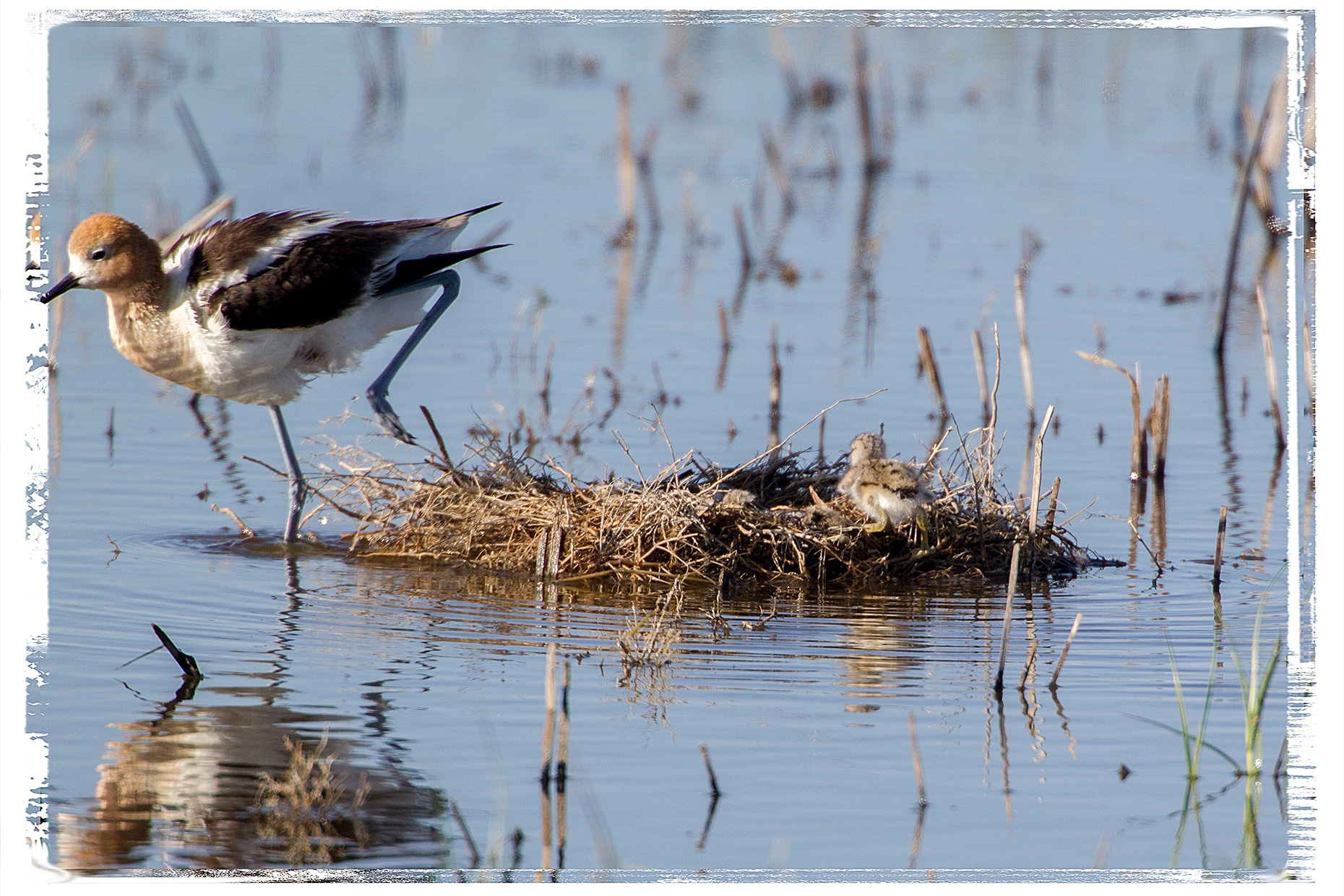
and wondering where the parent has gone.
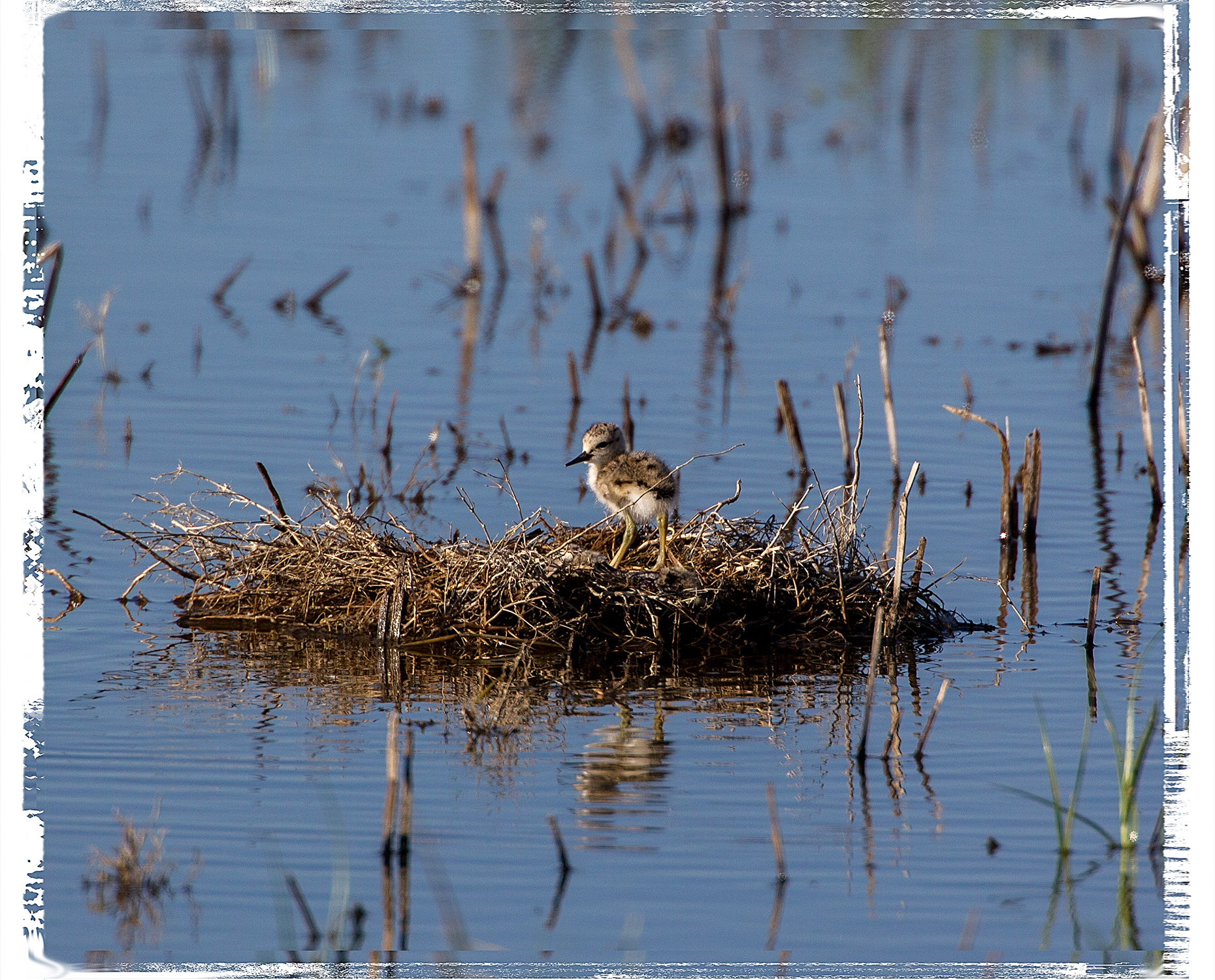
As the parent returns, the chick is just starting to get back in the water.
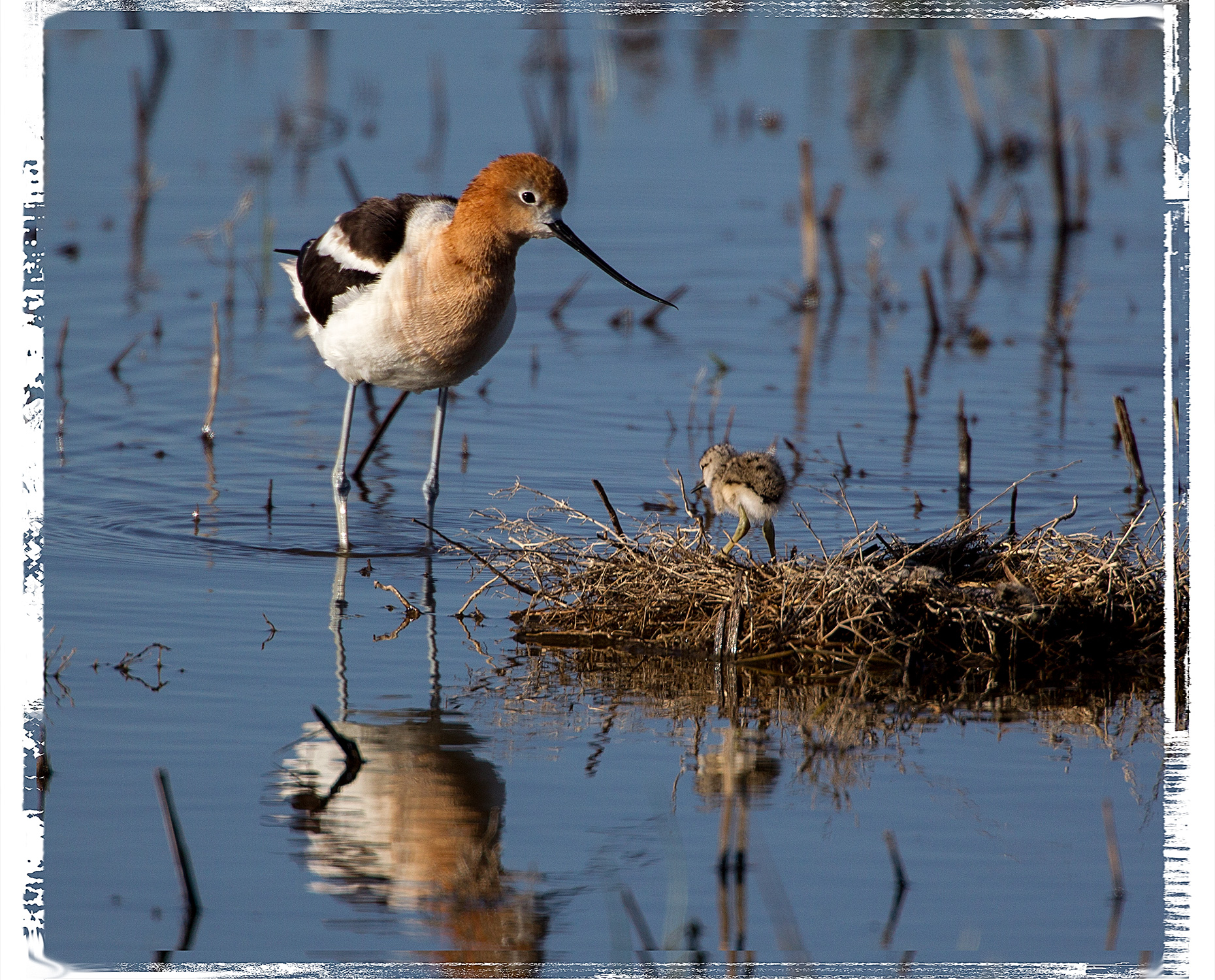
As it swims away, the parent returns to sitting on the nest
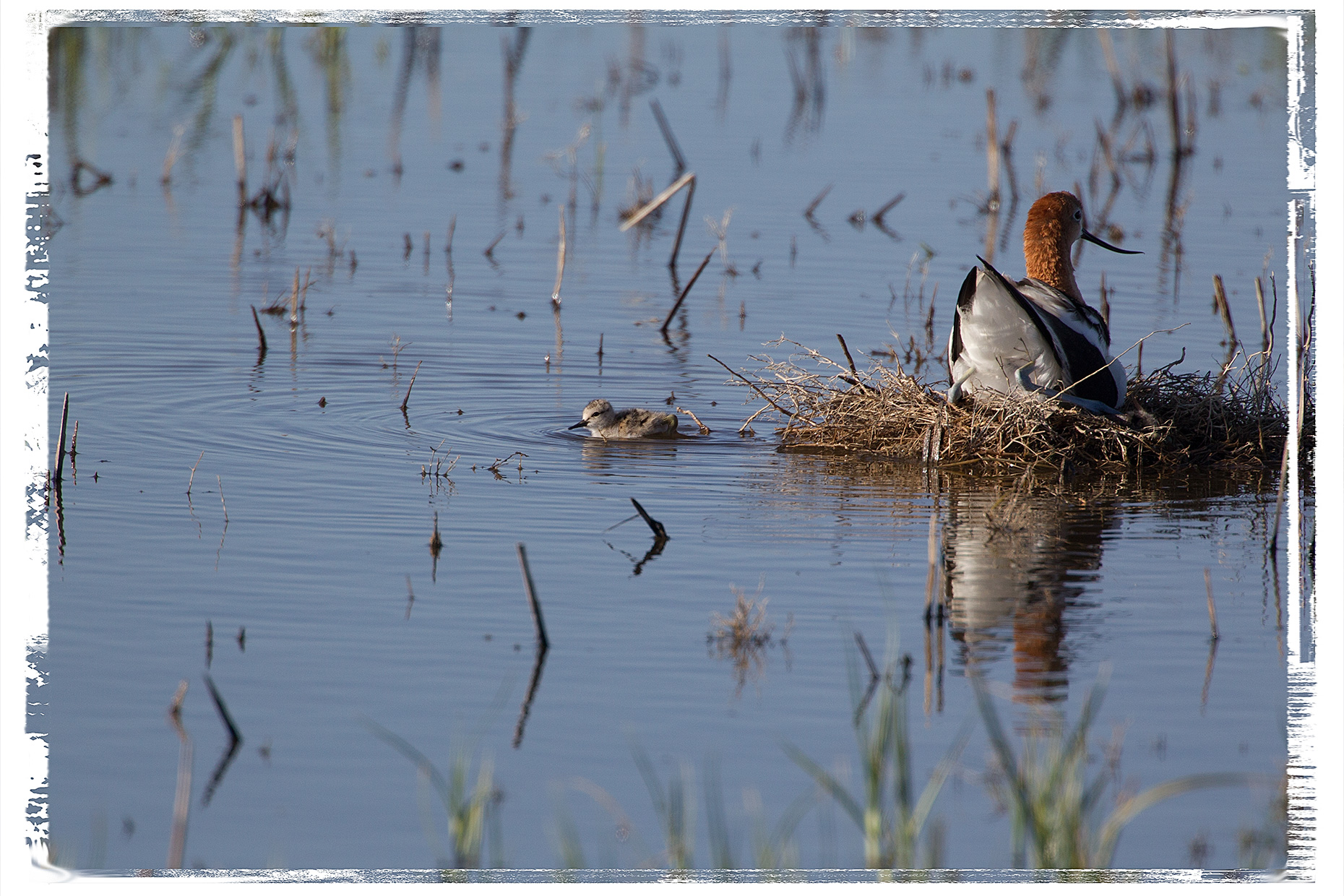
and the chick turns around and starts swimming back to the nest.
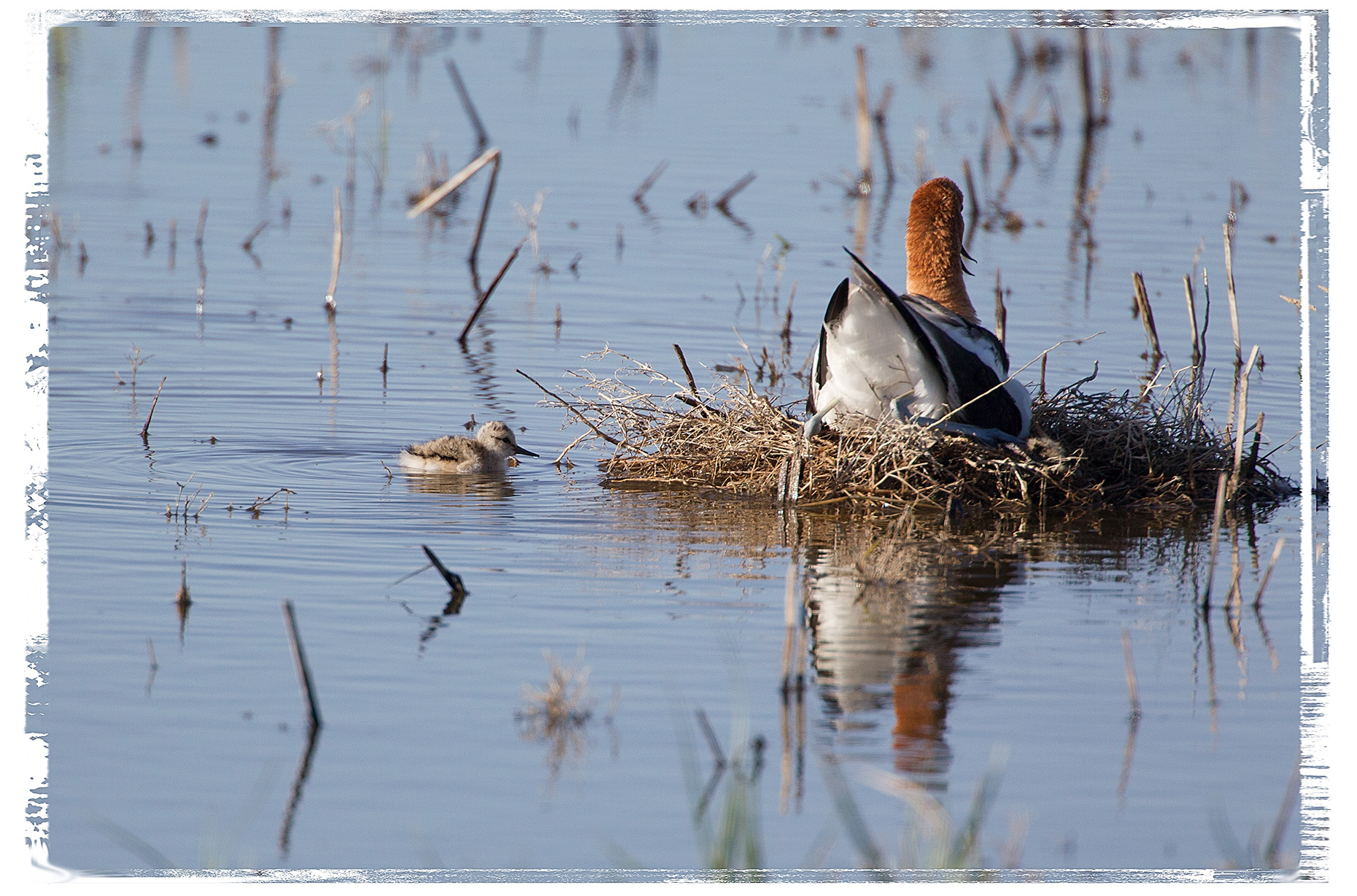
It’s still not clear to me whether the parent wanted the chick to leave the nest or to return to the nest.
I also wondered if the chick would be safer in the surrounding reeds than in the nest. The nest certainly seemed very exposed. We were also bothered by the fact that we saw only one chick and not the three we had seen the evening before. Did something already get the other chicks, or were they hiding in the nearby reeds with the other parent, waiting for their sibling to join them? We preferred to think they were hiding in the reeds, though survival rates apparently aren’t very high for Avocet chicks.

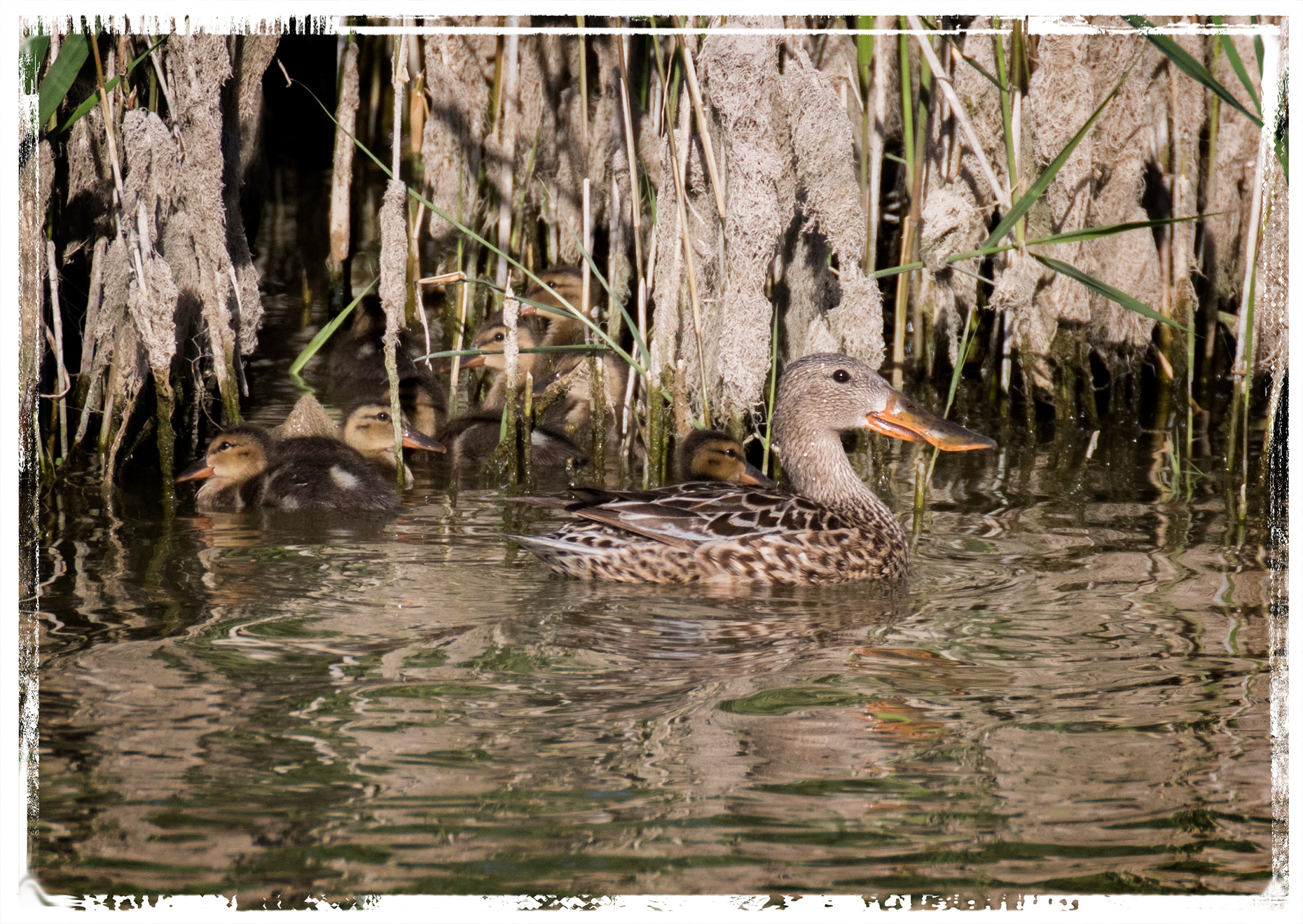
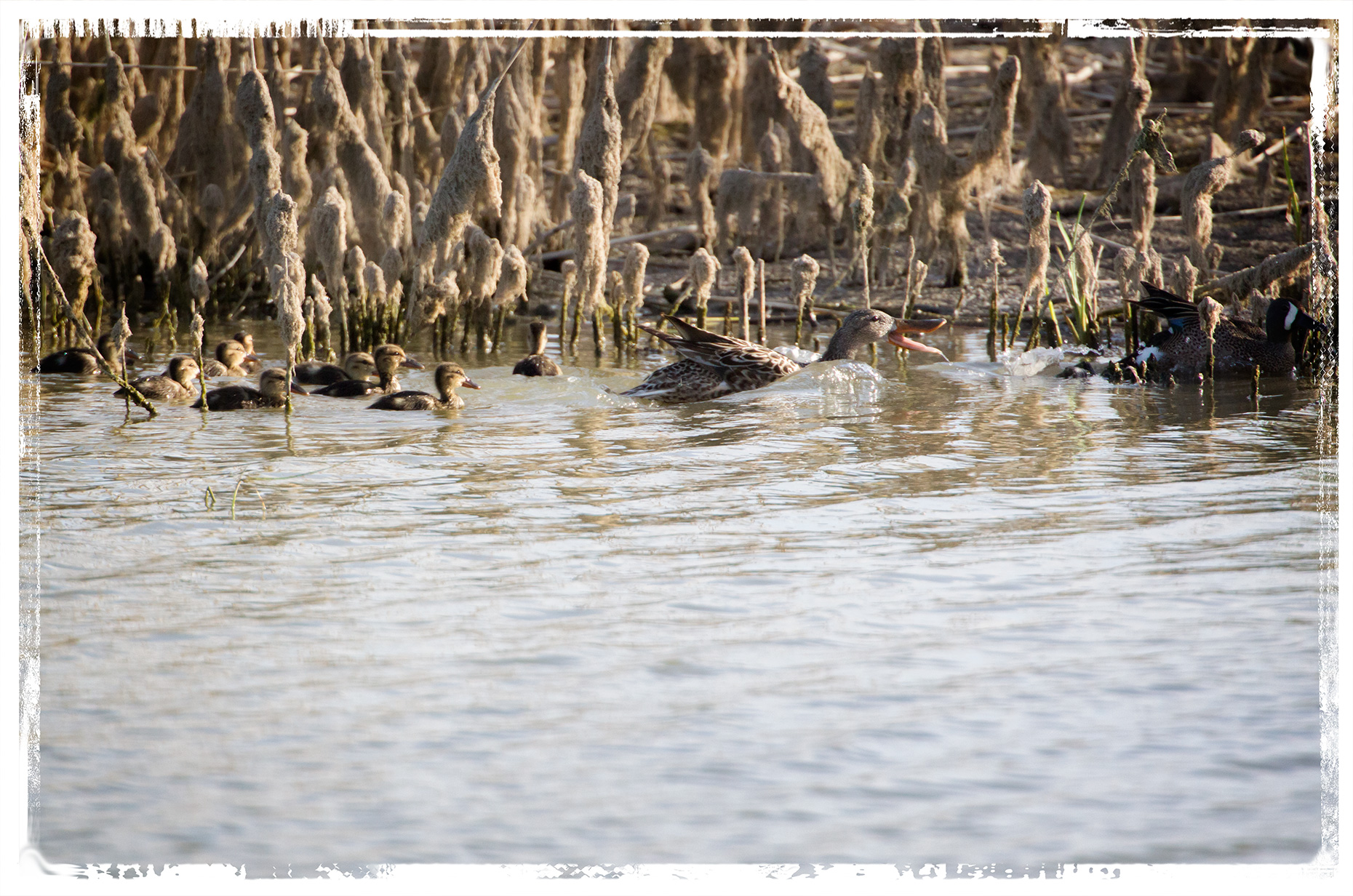
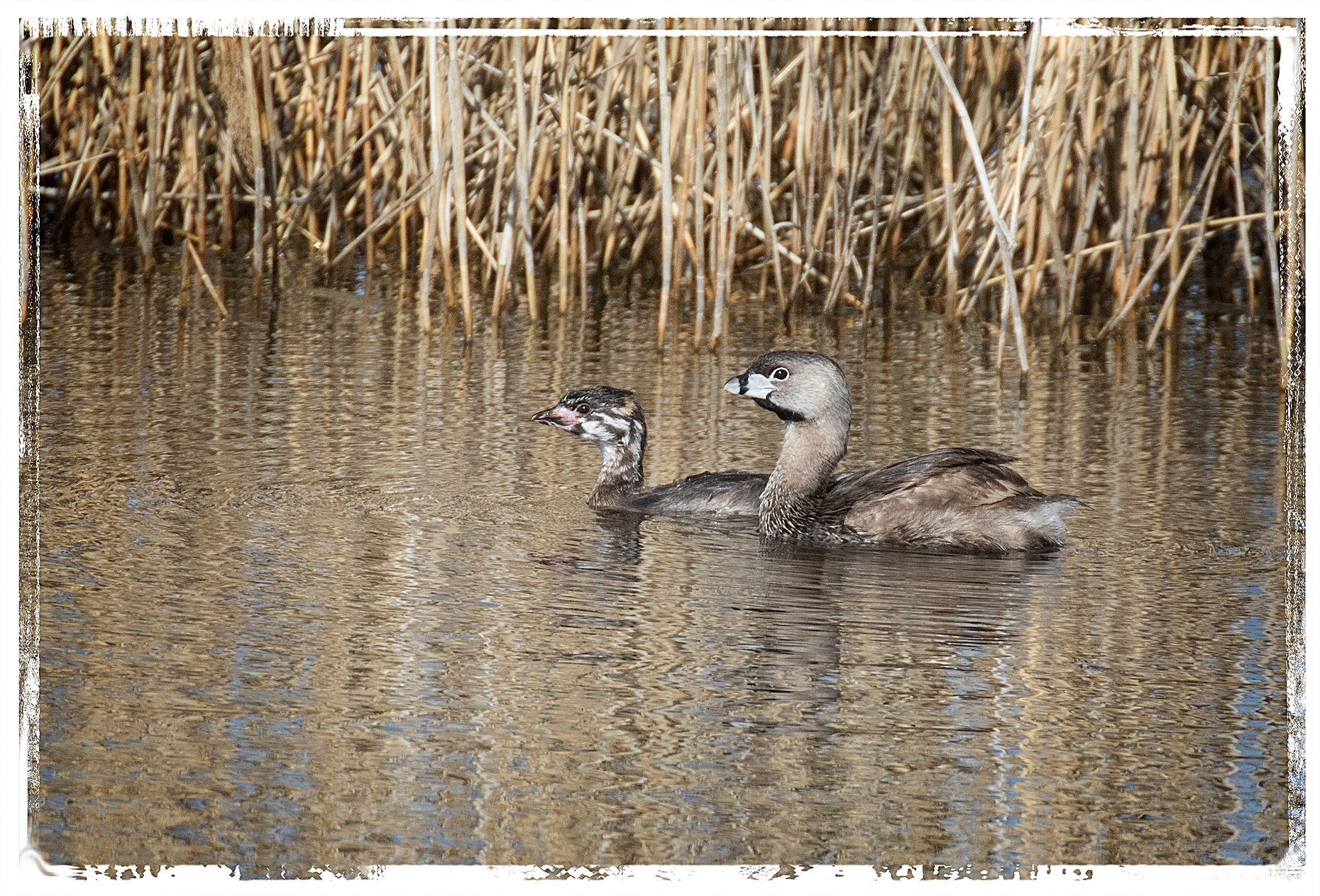
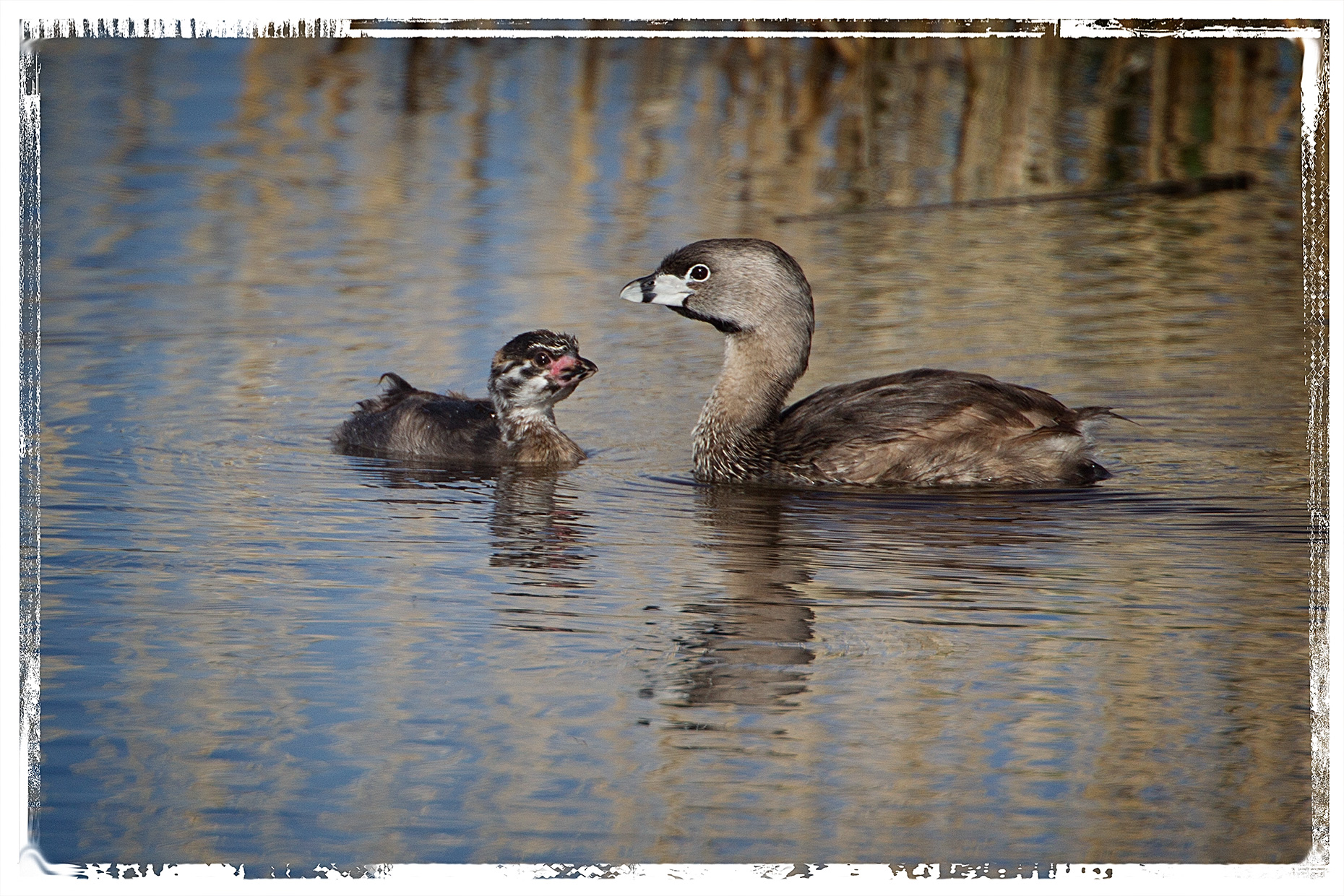
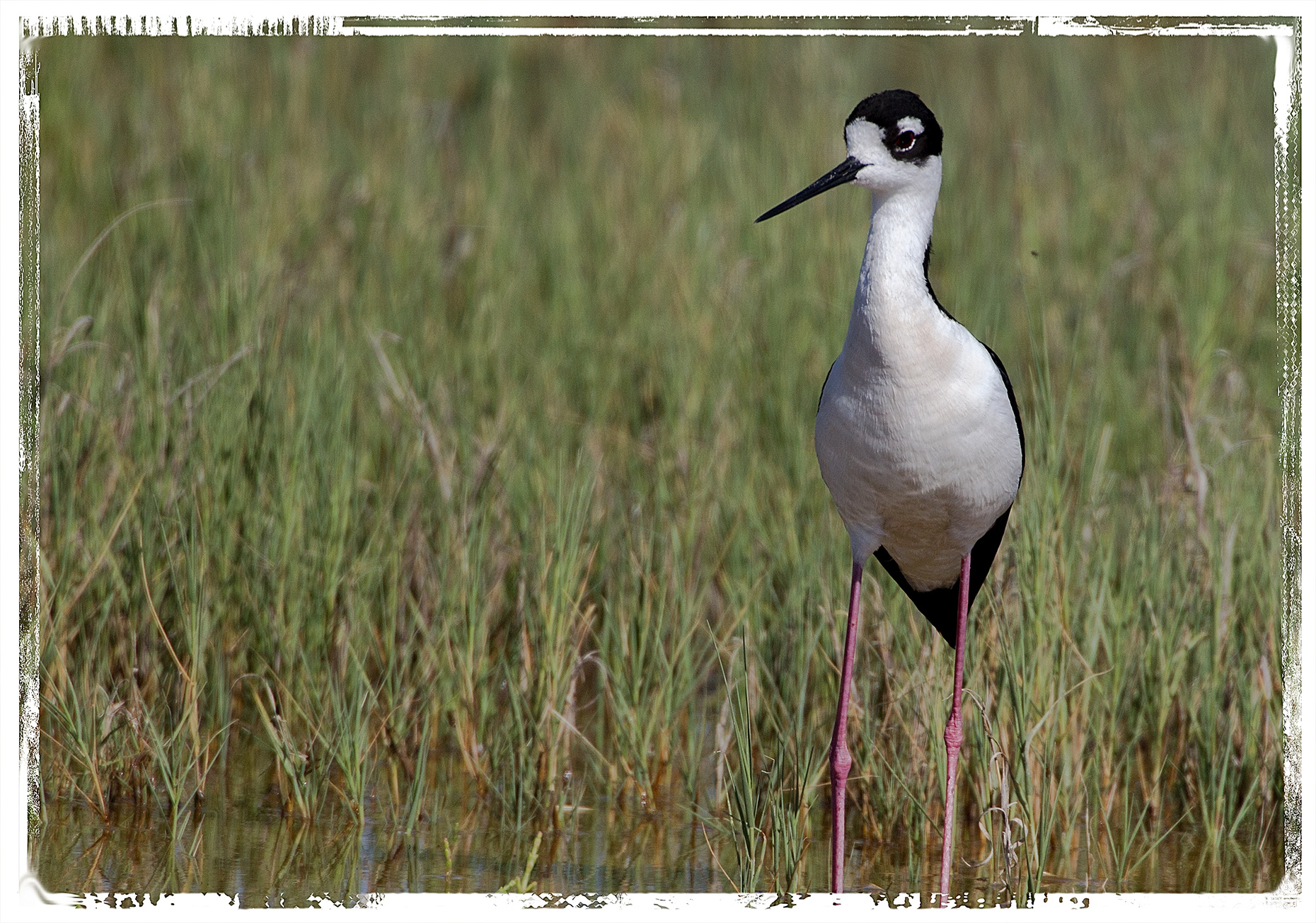
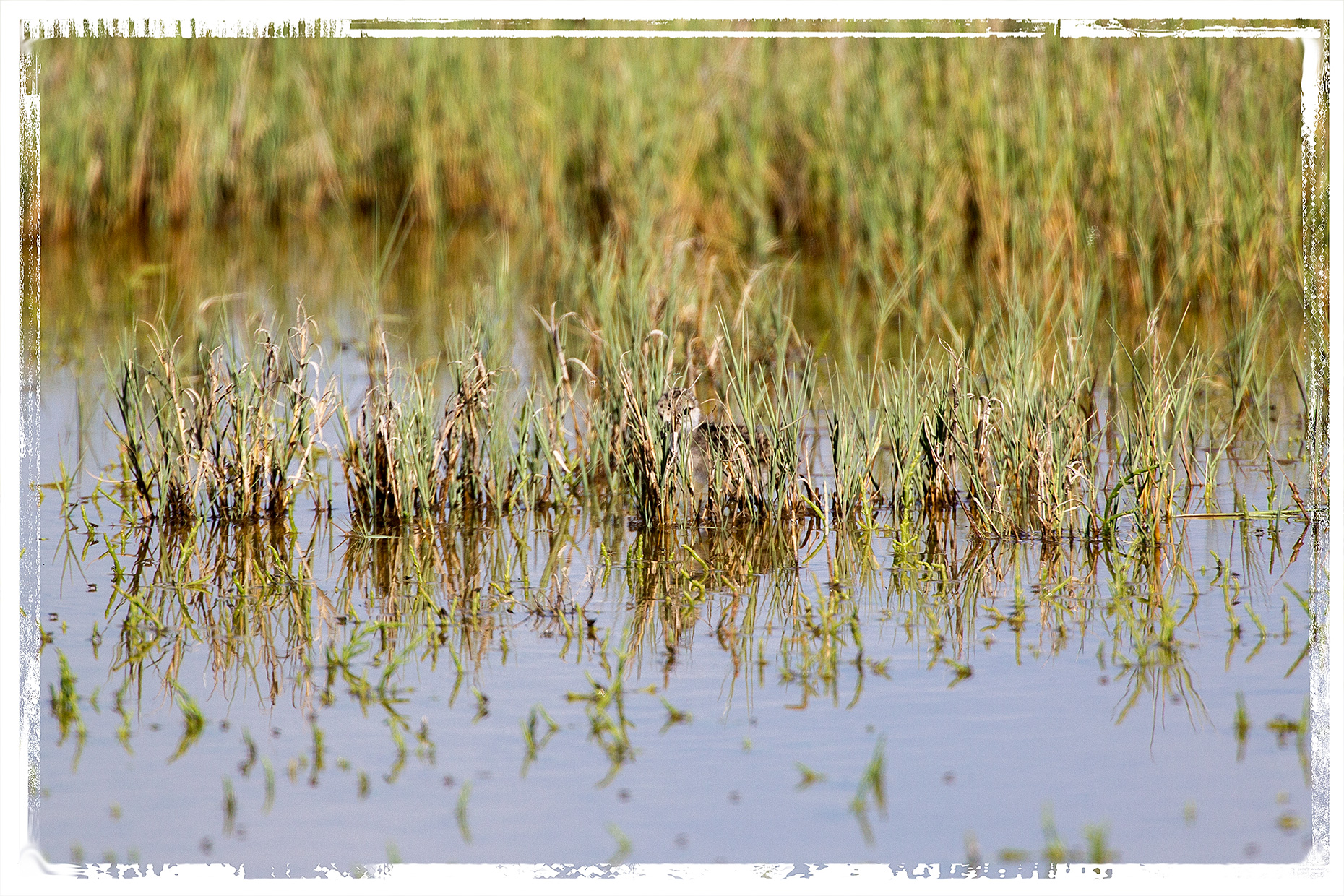
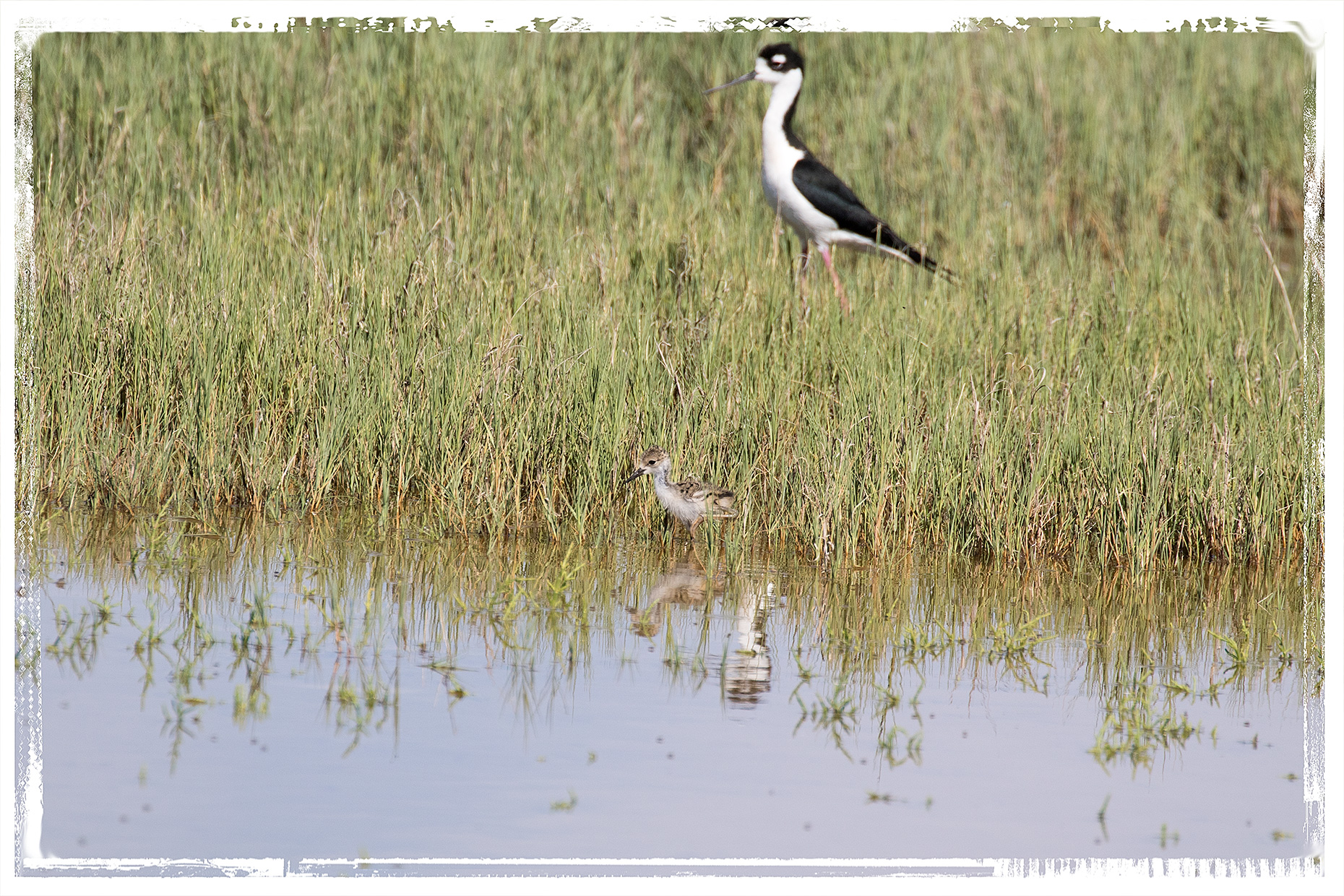
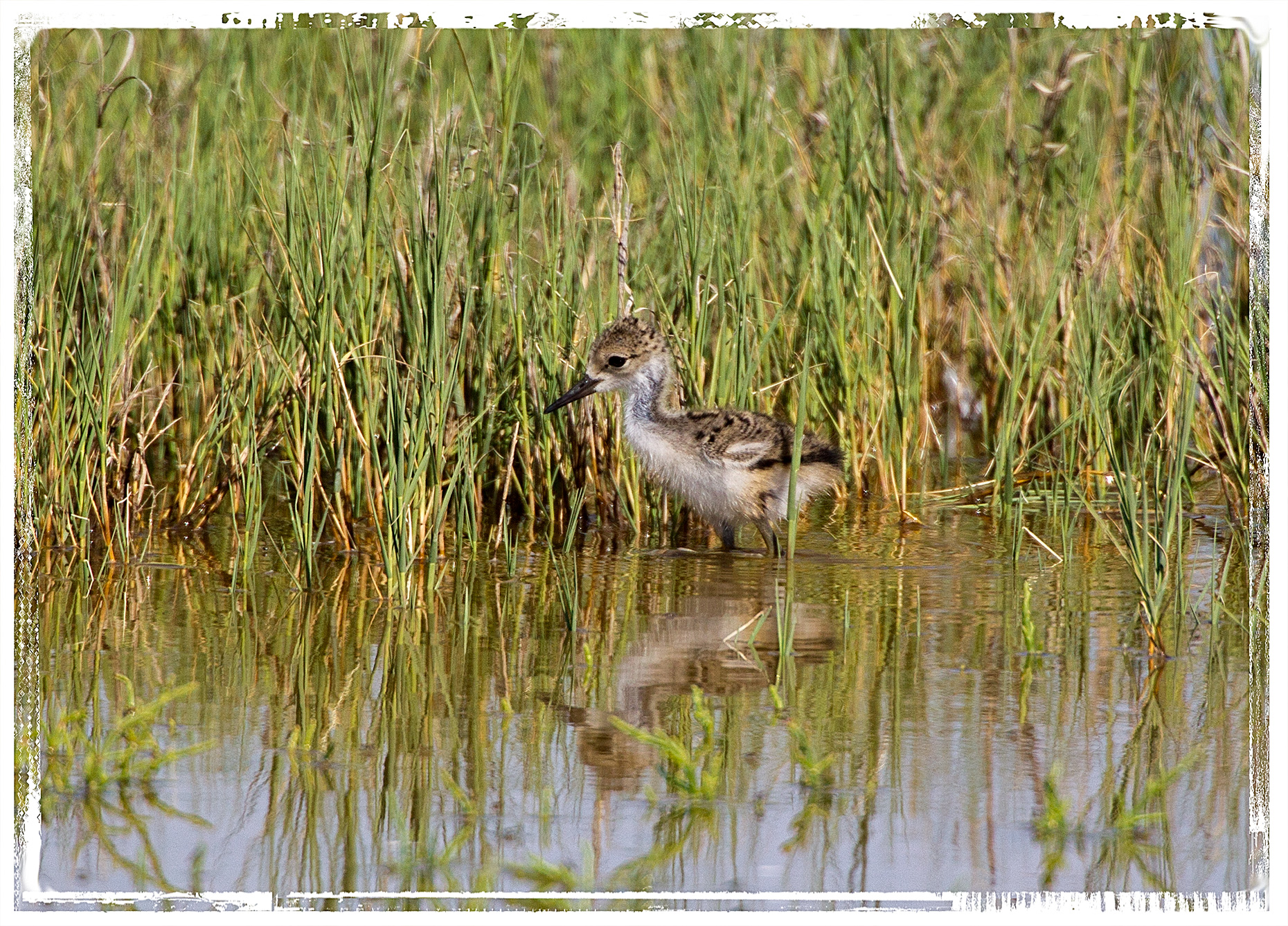
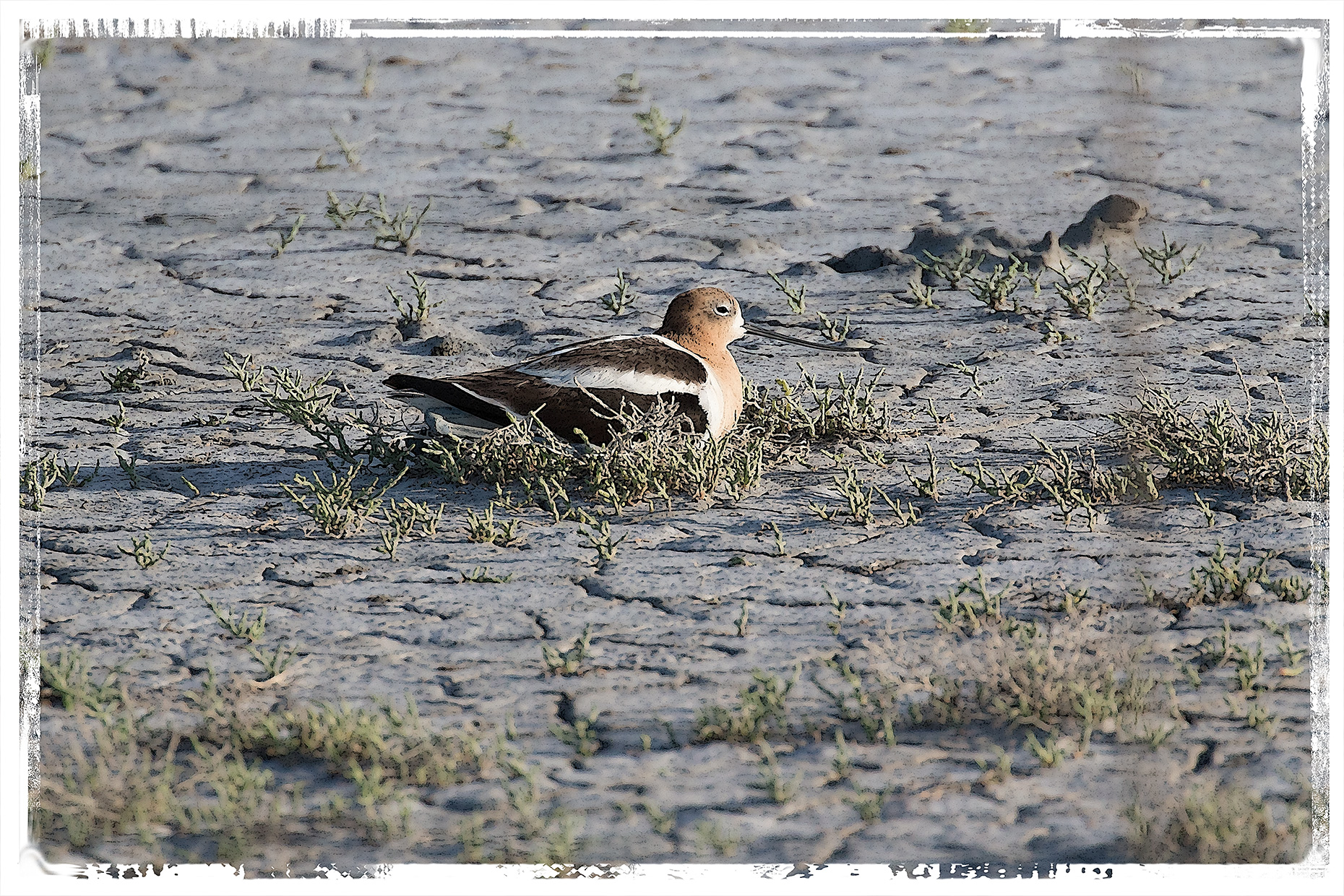
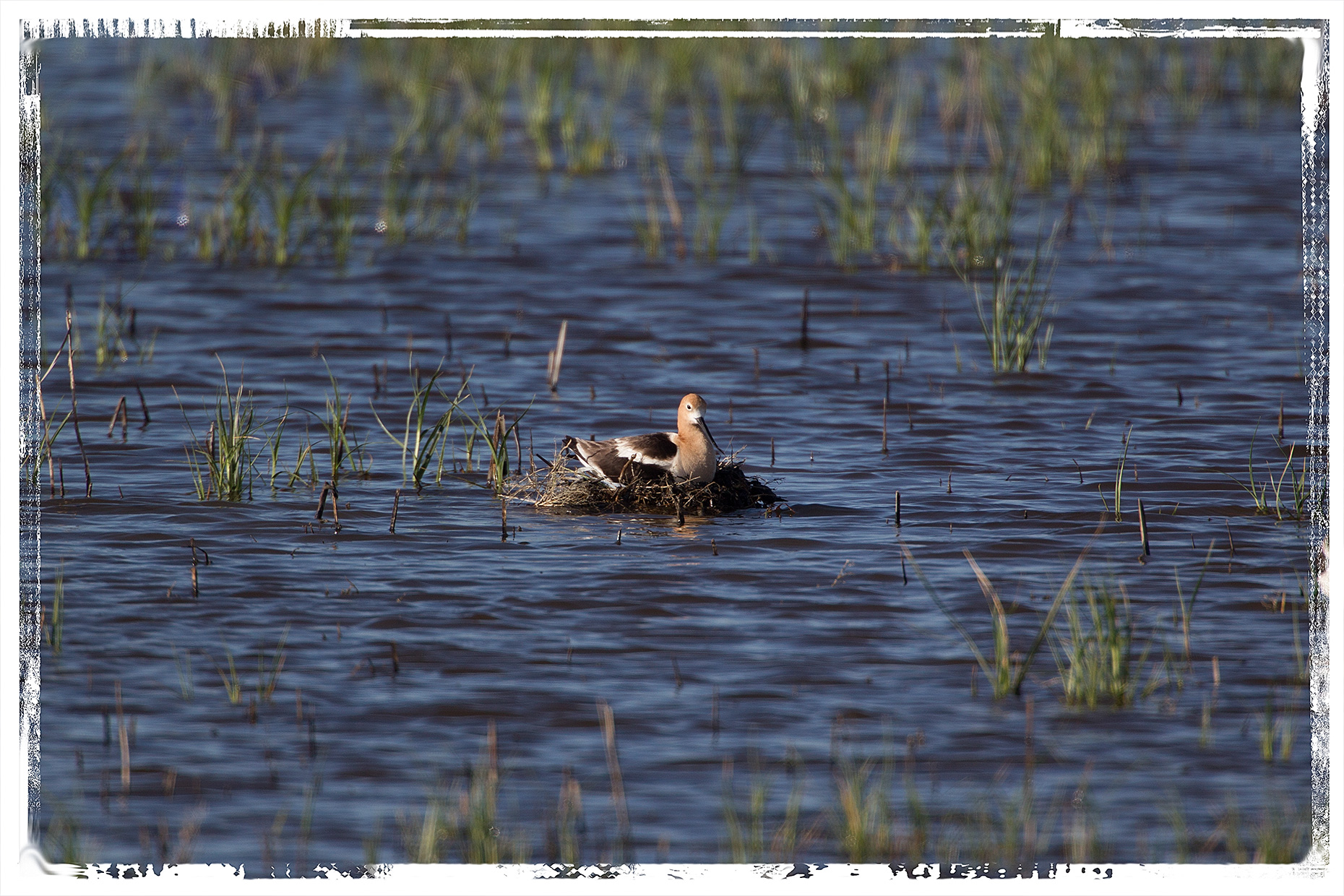
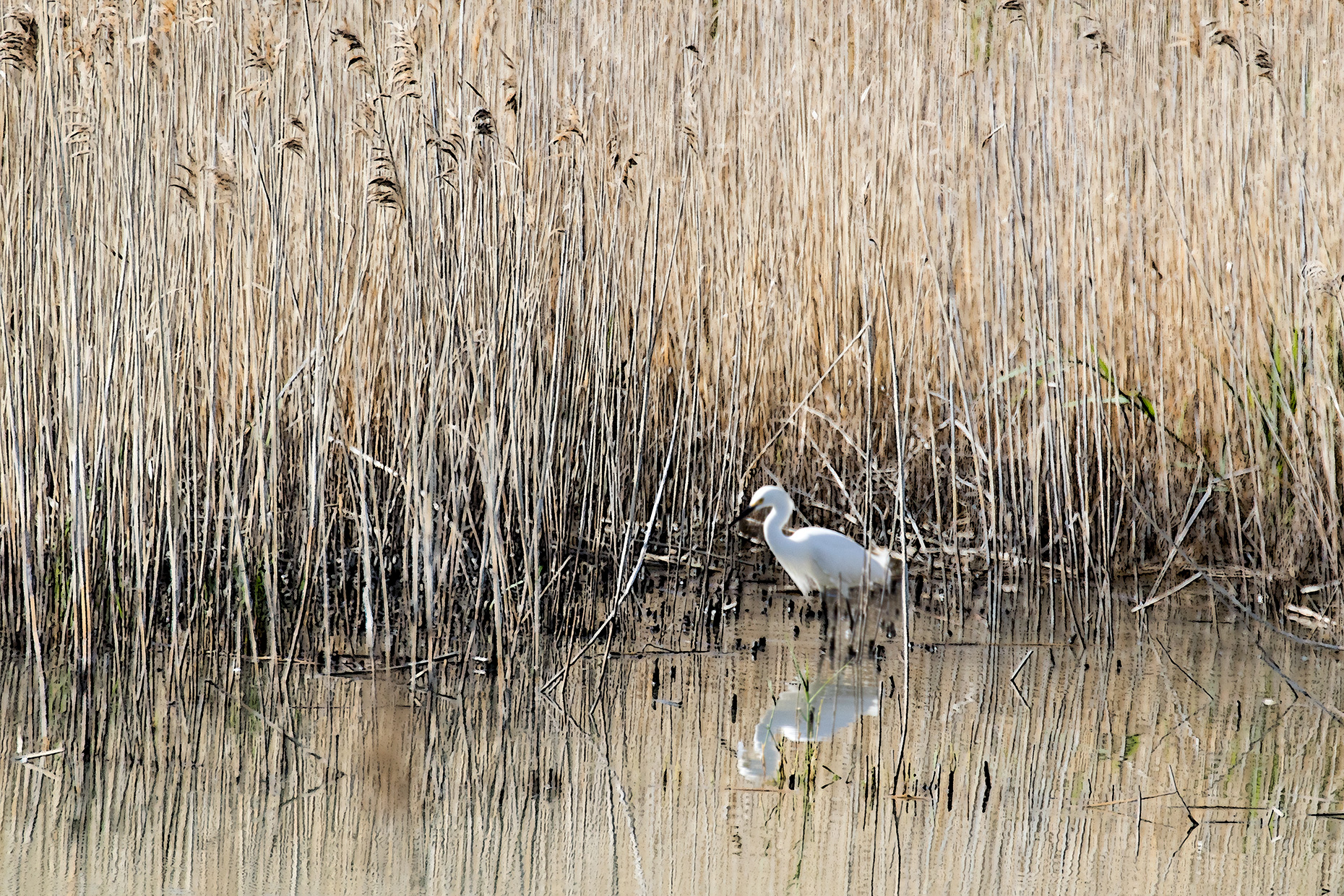
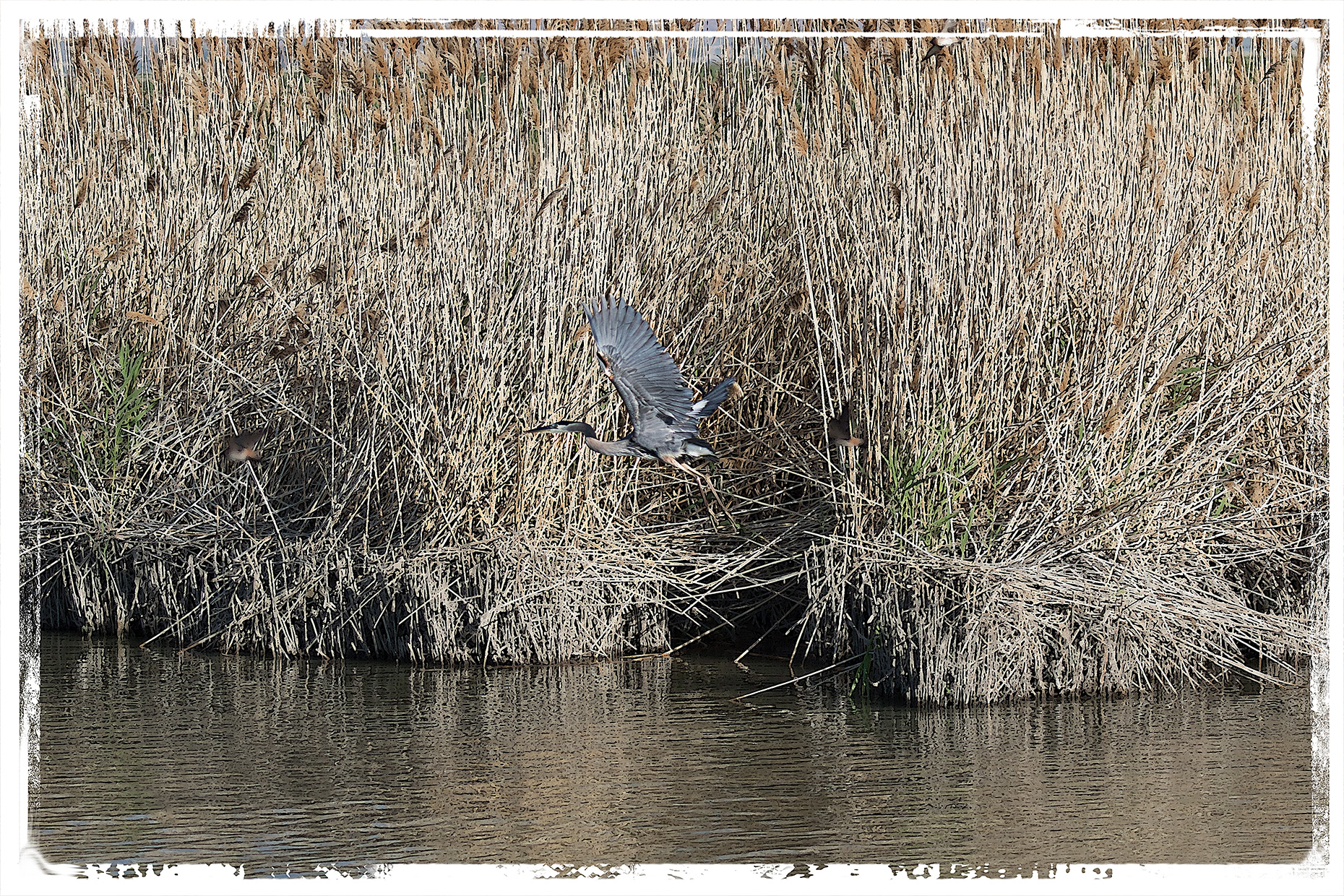
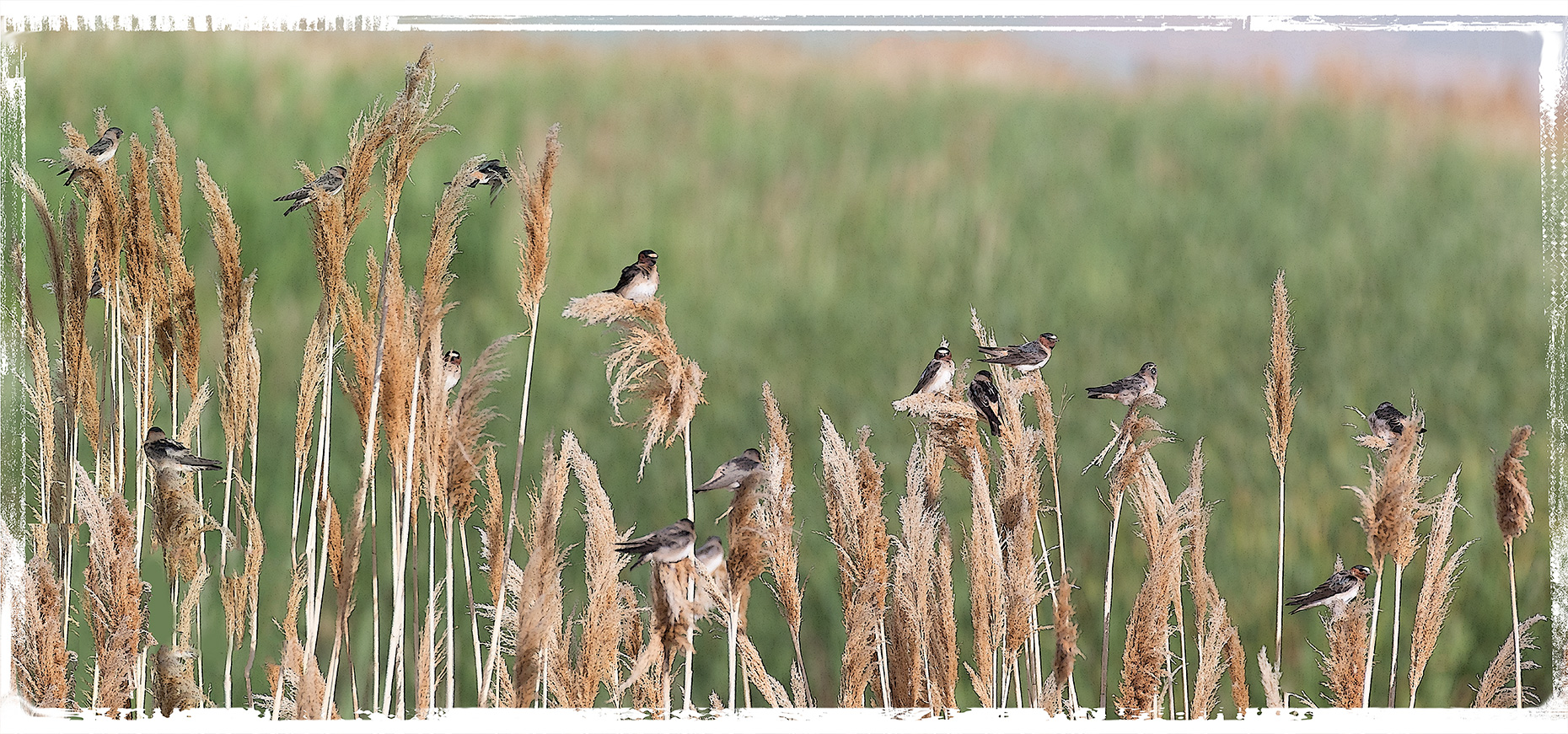
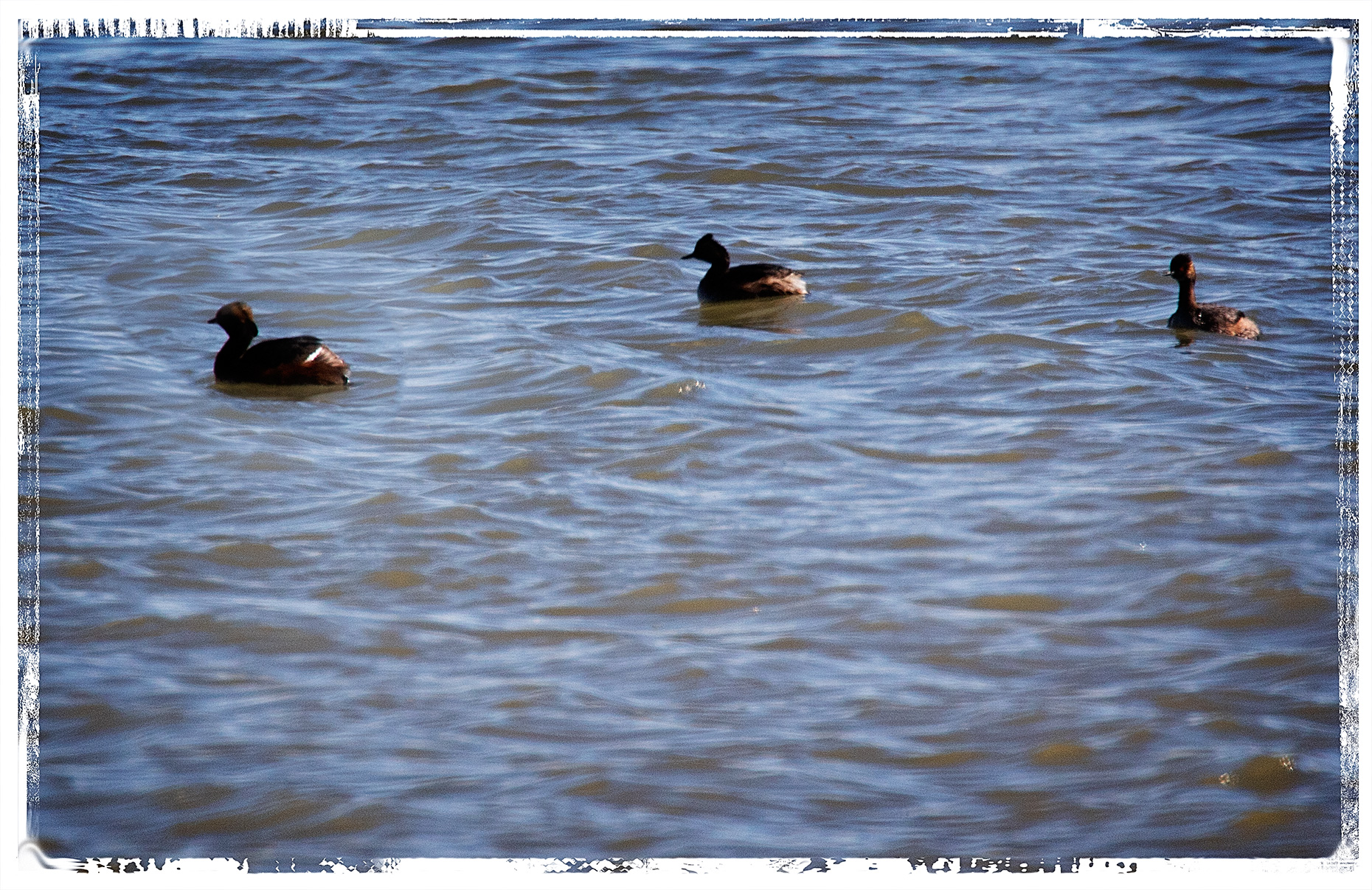
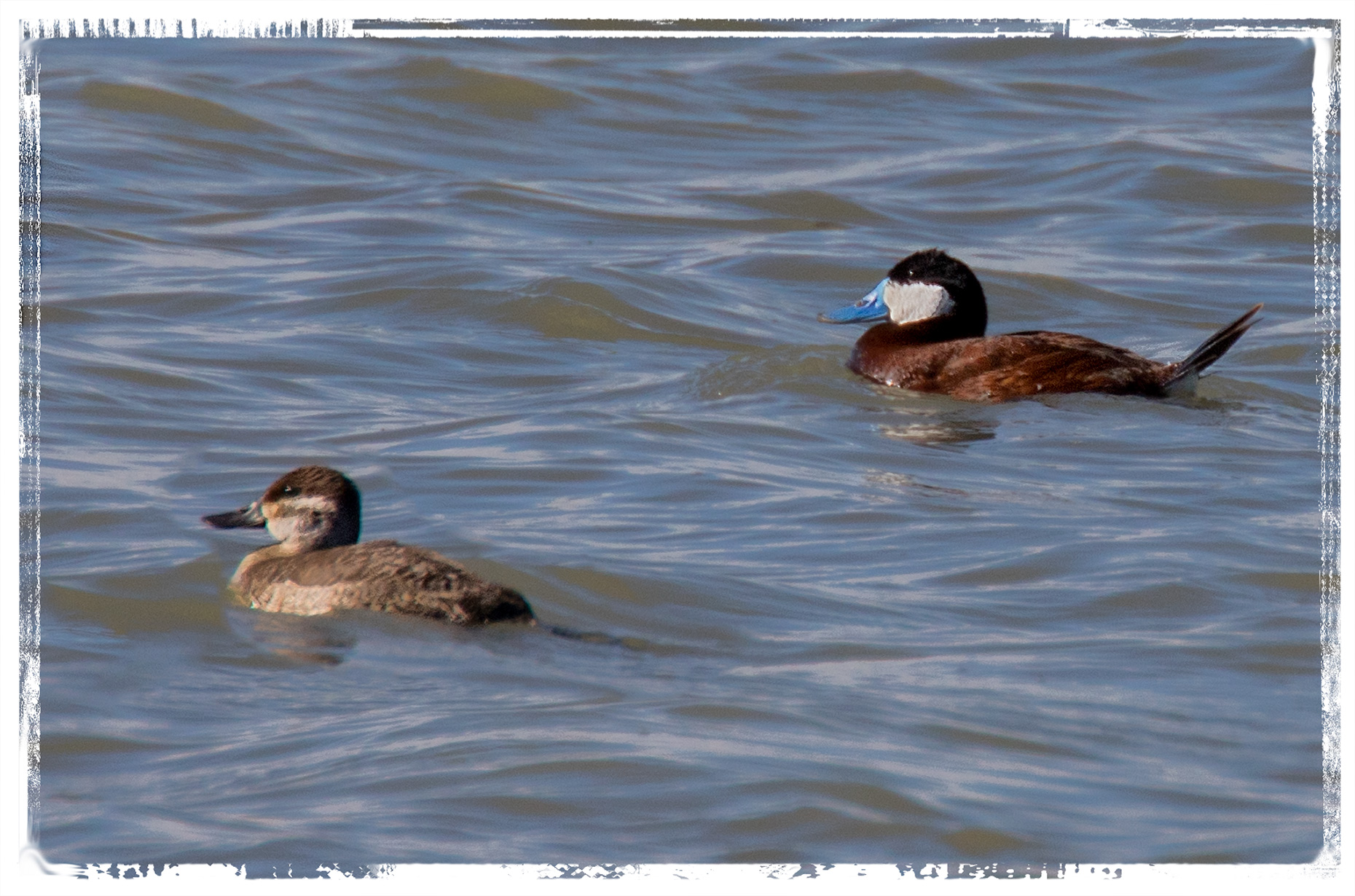
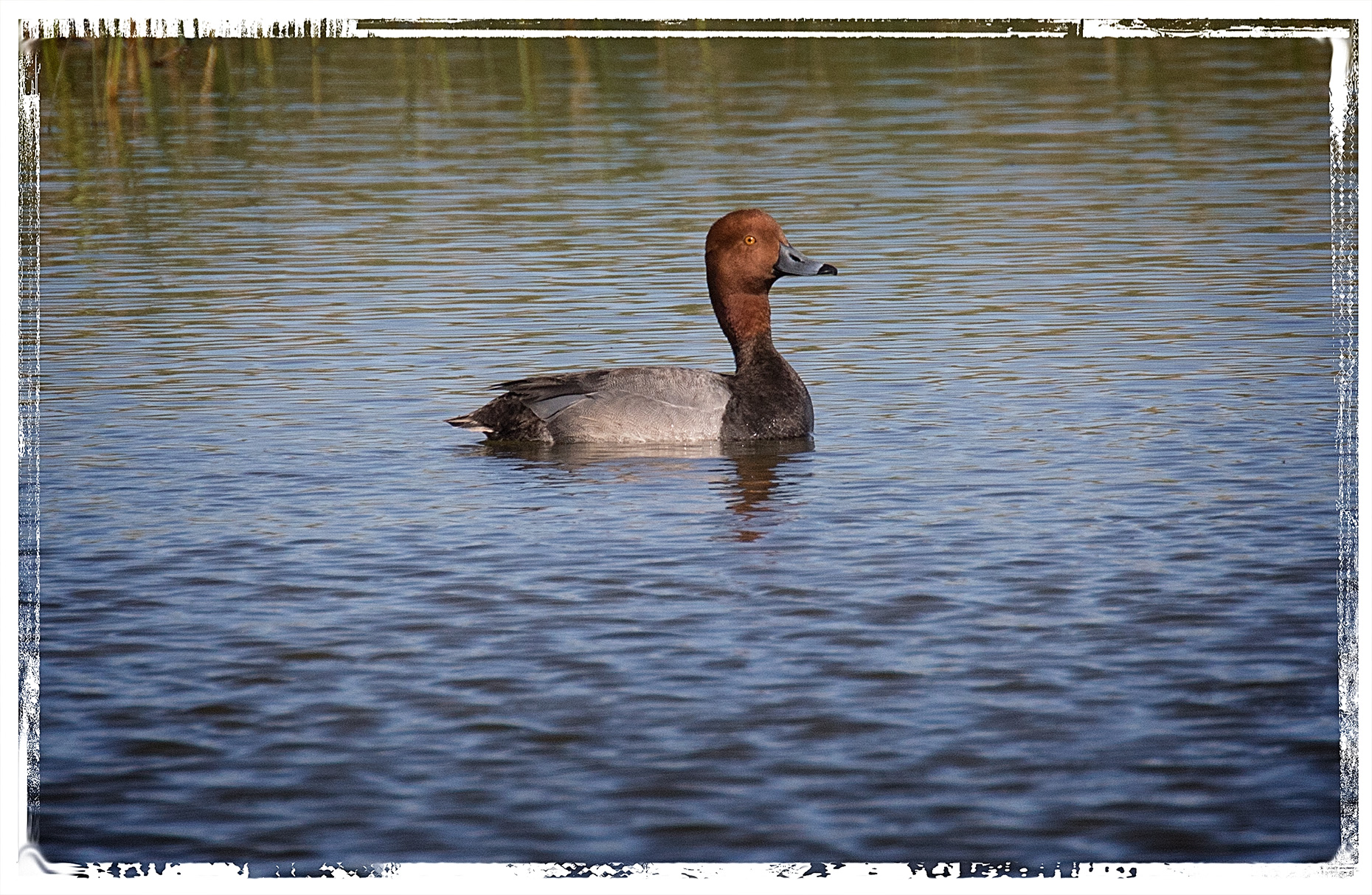
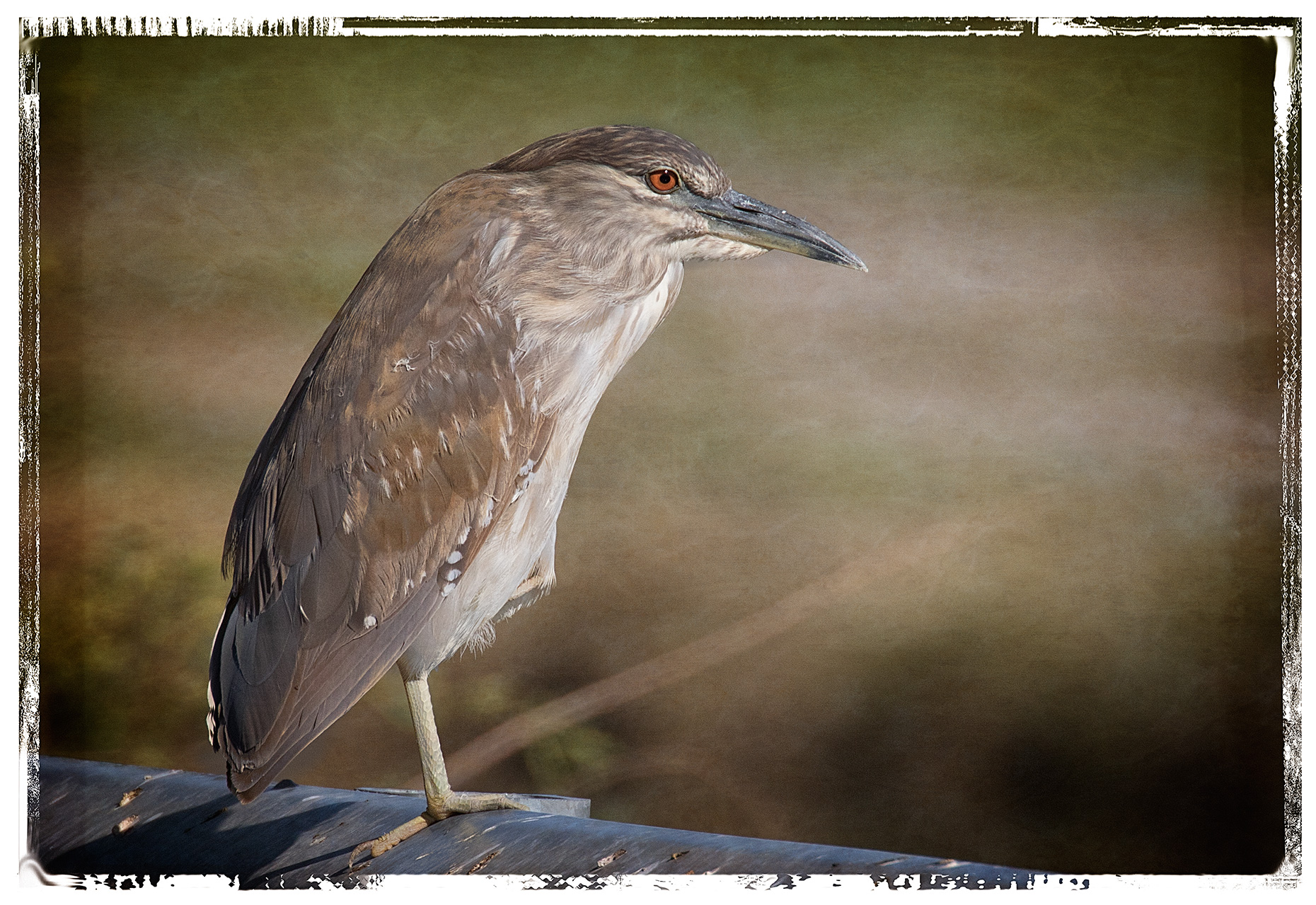
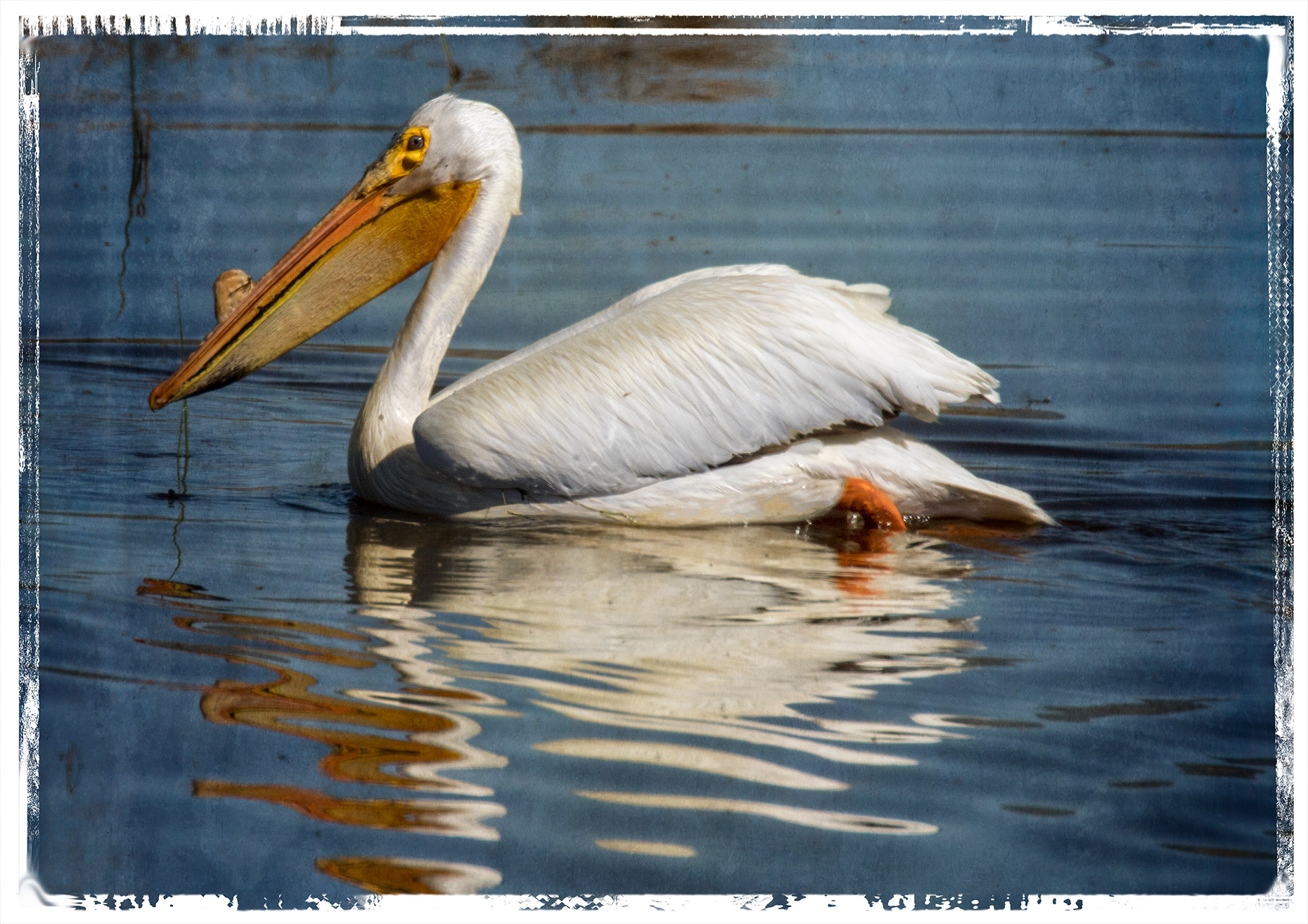 ]
]